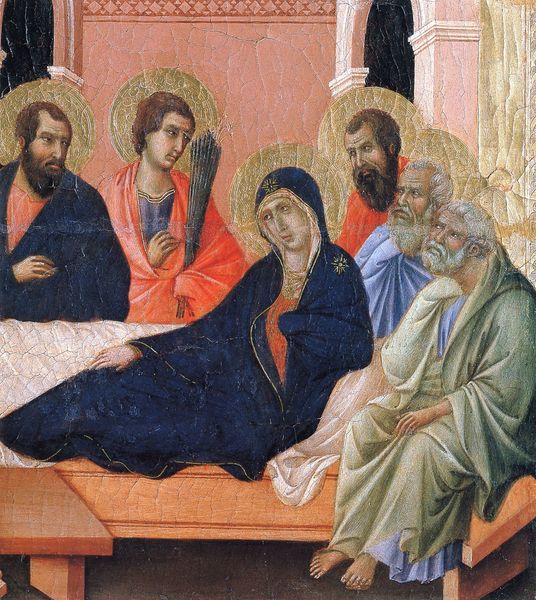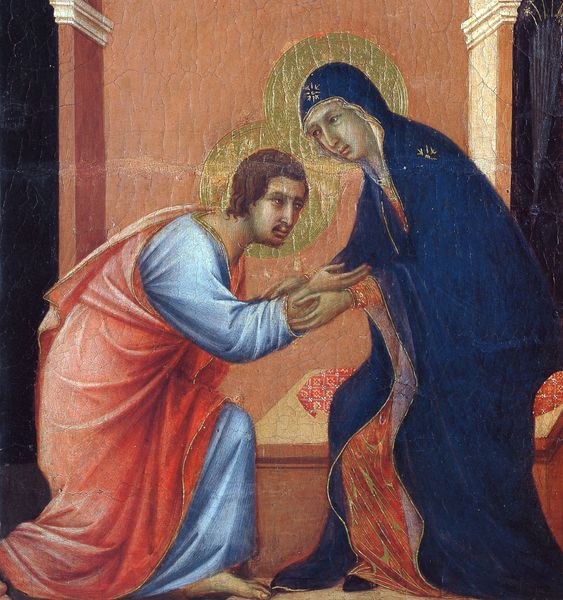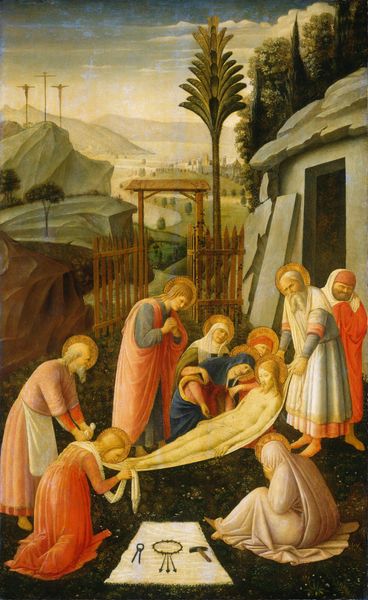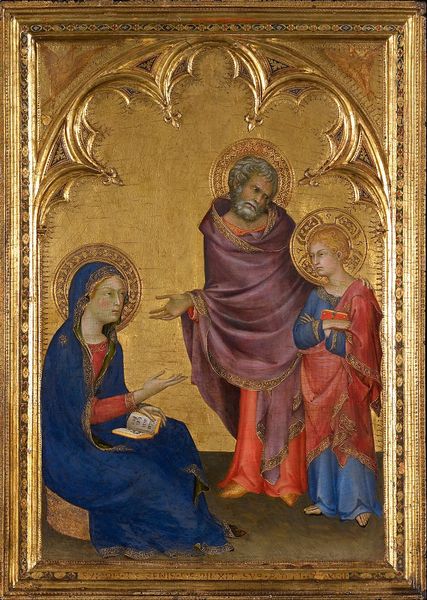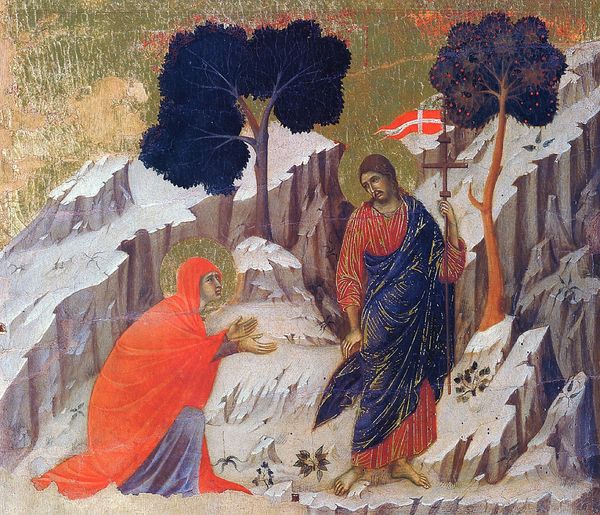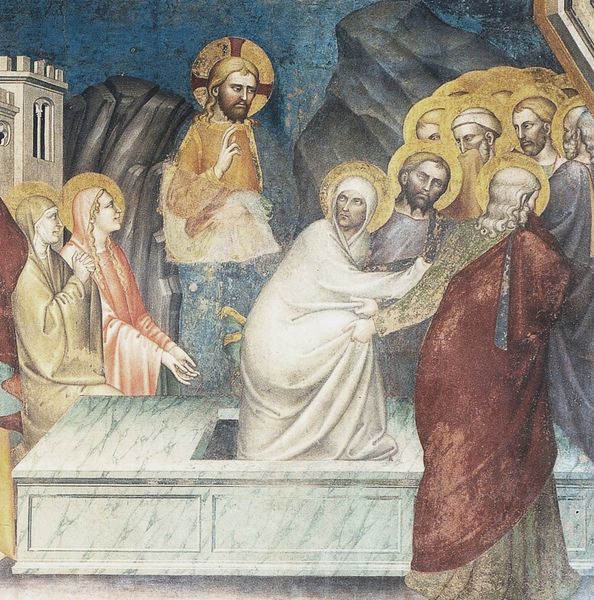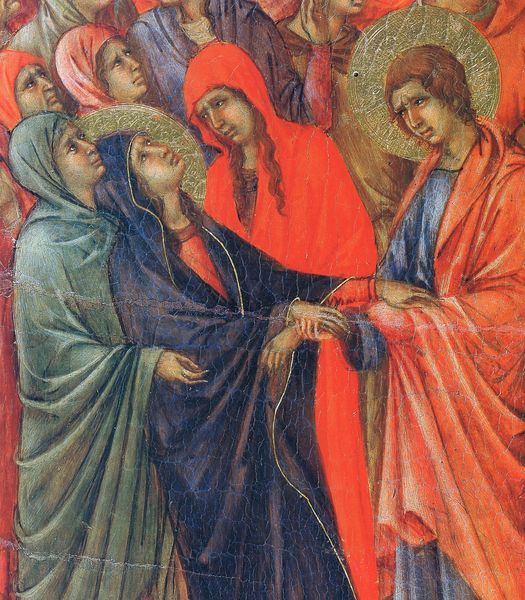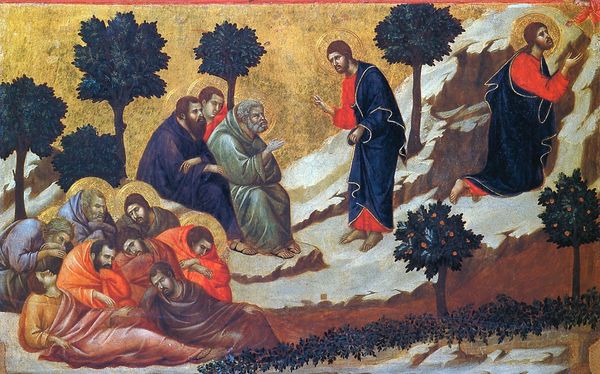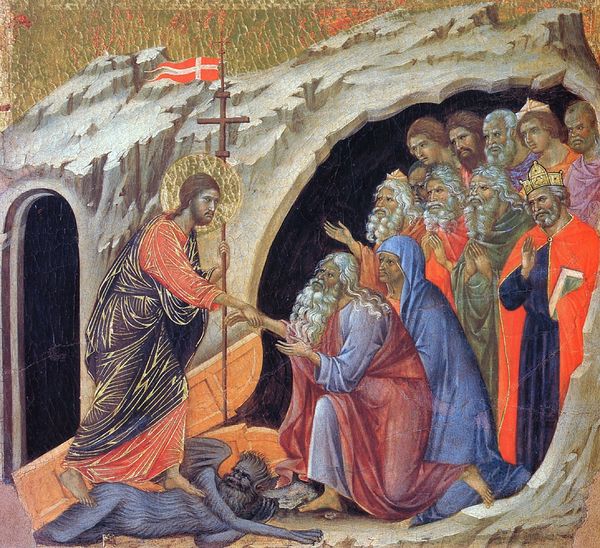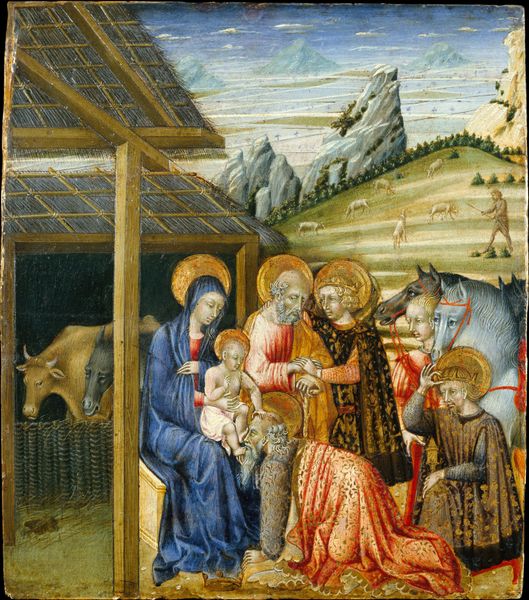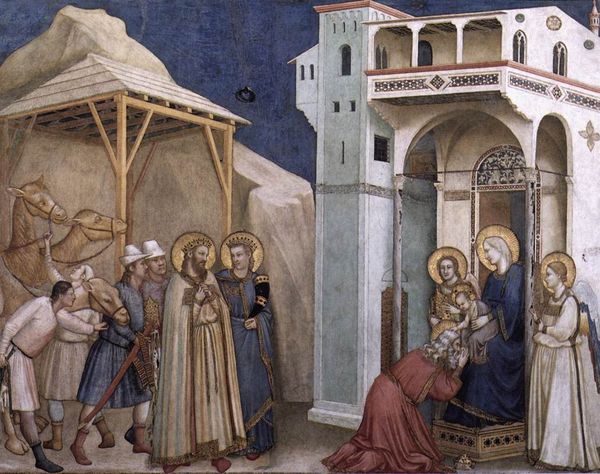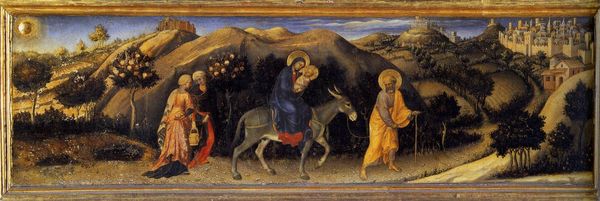
tempera, painting
#
portrait
#
tempera
#
painting
#
sienese-school
#
figuration
#
oil painting
#
jesus-christ
#
christianity
#
history-painting
#
italian-renaissance
Copyright: Public domain
Duccio painted this panel of ‘Christ Appearing to Mary Magdalene’ in Italy, sometime around the year 1300. This fragment once formed part of a larger altarpiece, commissioned for the Cathedral in Siena. Consider the public role of art at this time. Church doctrine held very specific views about the role of women in the Church. In paintings made for religious institutions, like this one, Mary Magdalene was often depicted as a repentant sinner. Here, though, she is the first witness to Christ's resurrection. Duccio’s painting reflects a particular theological argument, promoted by the Franciscans, that emphasized Mary’s privileged role. What were the social conditions that shaped artistic production during this time? Well, the commissioning of religious art was largely driven by the Church, which used art as a tool for communicating religious ideas. To understand the nuances of this artwork better, historians consult theological texts and monastic records, uncovering the complex interplay between art, religion, and society.
Comments
No comments
Be the first to comment and join the conversation on the ultimate creative platform.
